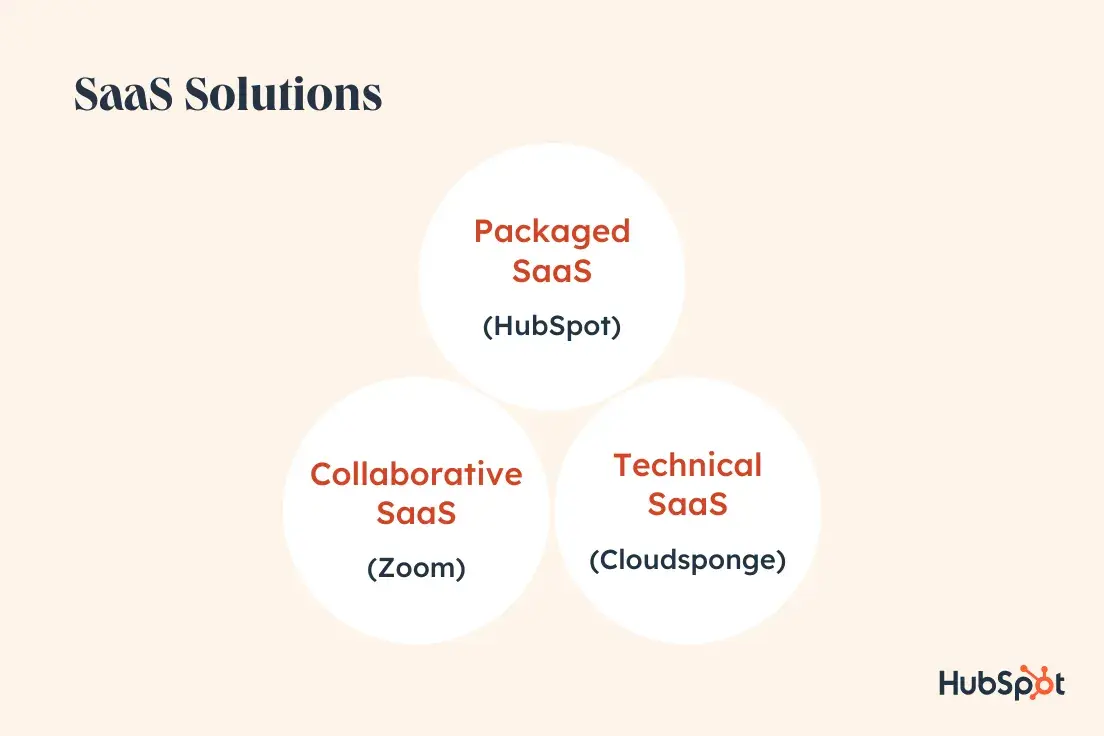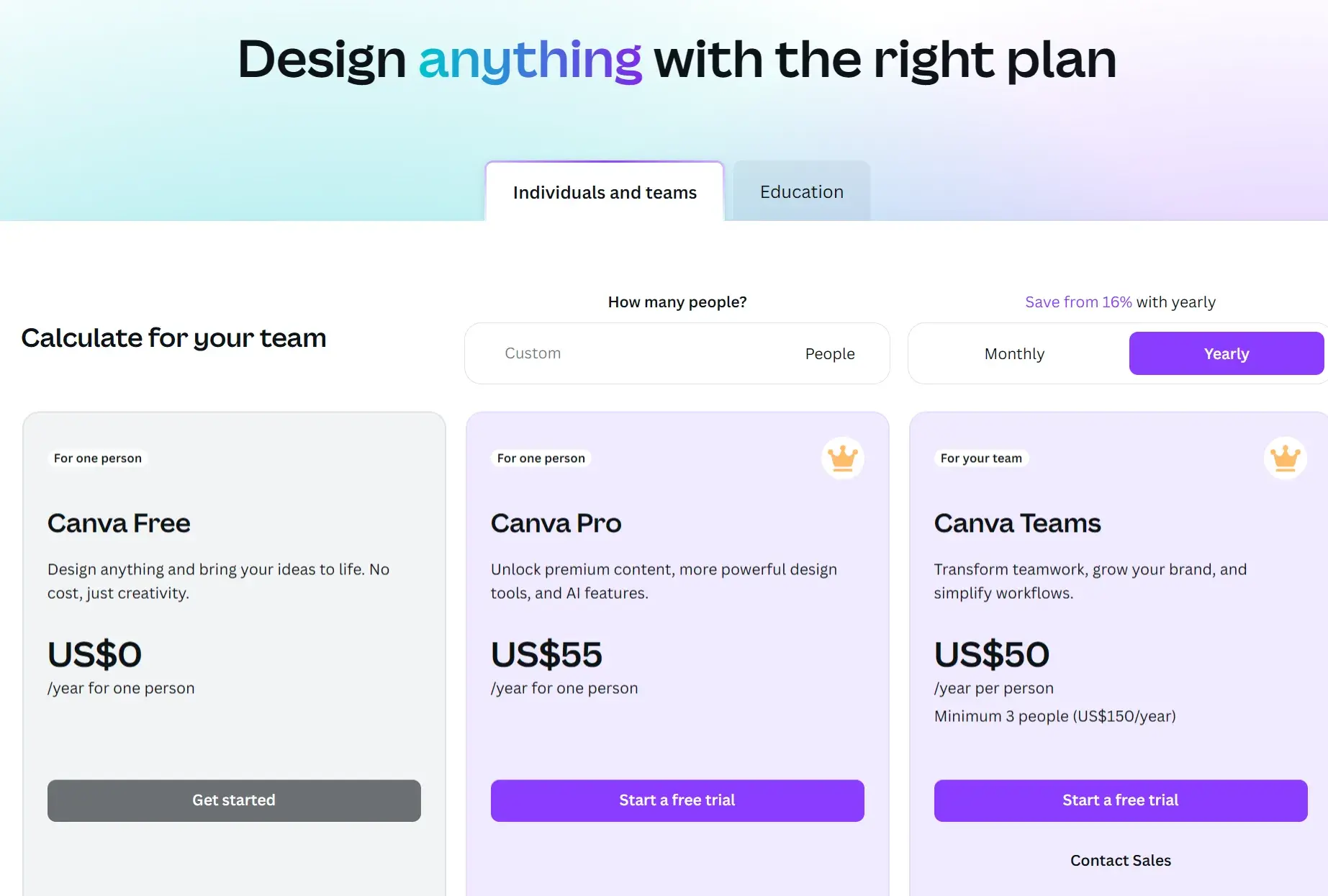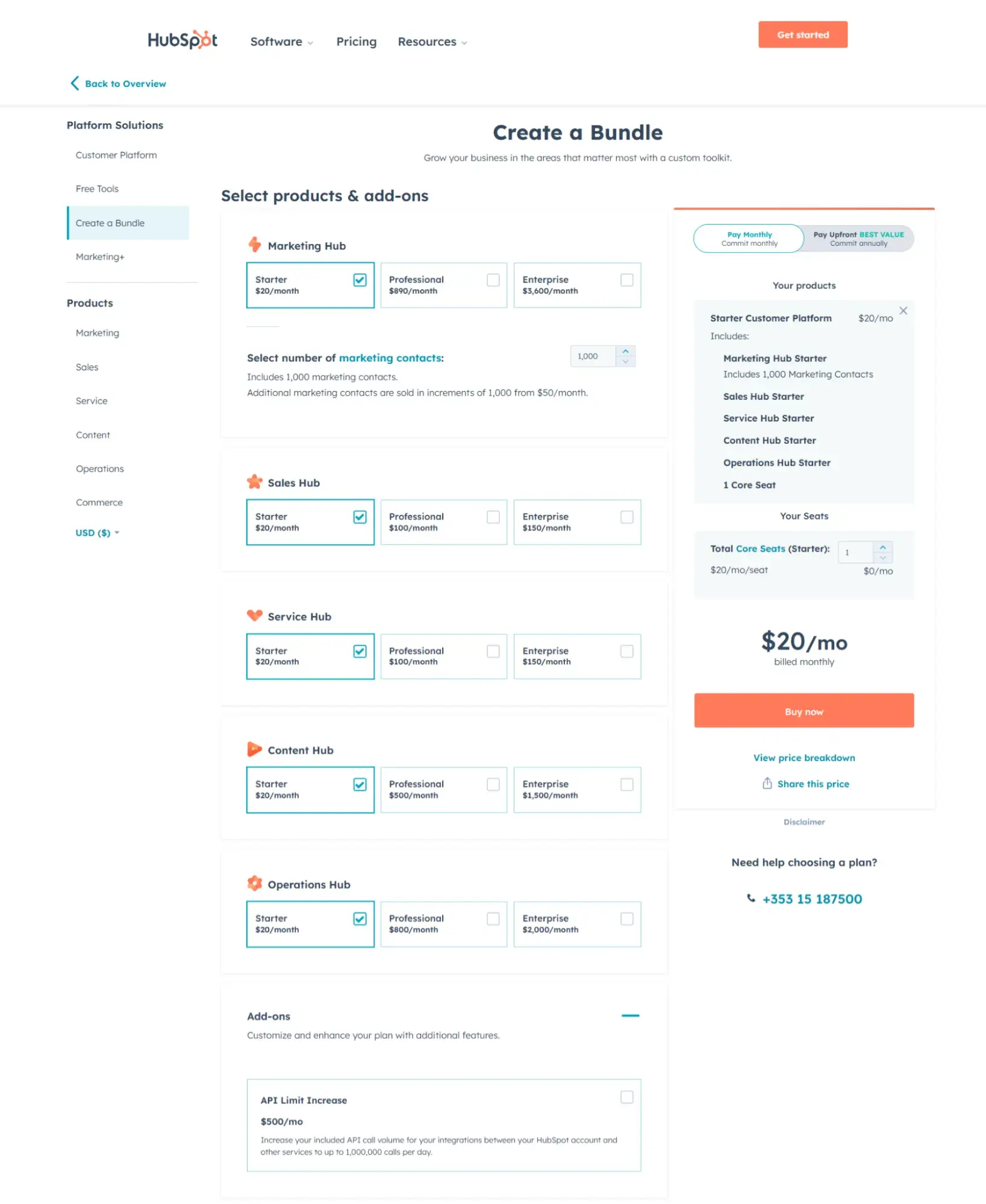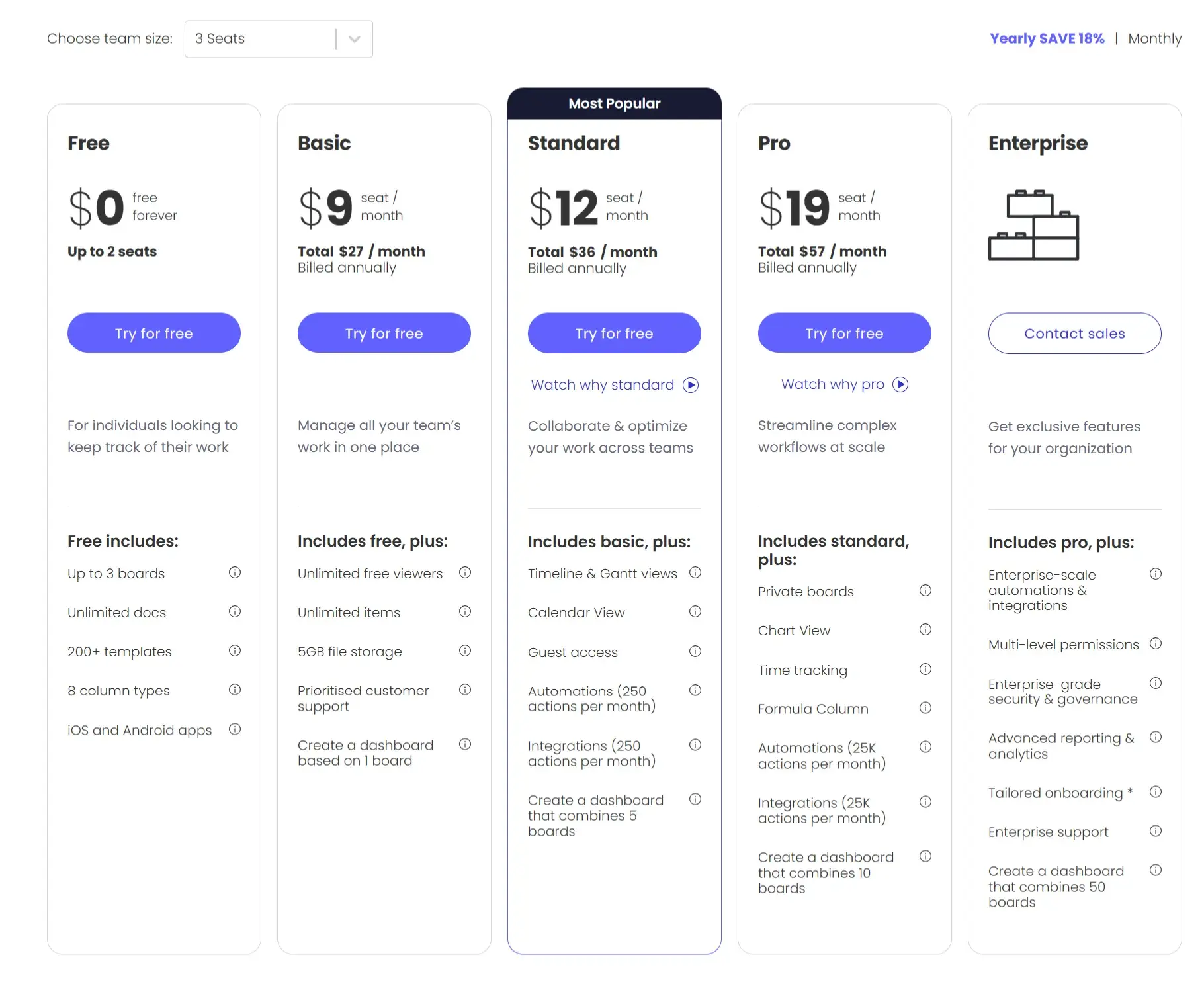In a world where the SaaS market is projected to reach $295 billion U.S. dollars by the end of 2025, arming yourself with a comprehensive SaaS overview and knowledge about the SaaS industry, its challenges, and its opportunities will set you up for success.
Whether you‘re an aspiring entrepreneur with a groundbreaking idea, a funded startup feeling the pressure to deliver, an established company facing increased competition, or a business looking to diversify through SaaS — that’s where this comprehensive SaaS launch guide comes in.
What Is SaaS?
Software as a Service (SaaS) is a software distribution model that gives customers access to applications over the internet, rather than requiring a physical media and custom installation.
How does SaaS work?
SaaS products are centrally hosted by a provider who maintains and updates the software automatically. Customers access and use them via web and mobile browsers.
With the software hosted and maintained by the provider, you minimize your reliance on in-house IT resources, freeing up capital and human resources for core business activities.
SaaS solutions typically employ a subscription-based pricing model, allowing users to pay for only what they use and easily adjust their expenses as their needs change.
What Is a SaaS company?
A SaaS company is a type of business focusing on creating, developing, hosting, and maintaining a proprietary Software as a Service product. The core benefits of running a SaaS company include instant access to an unrestricted, global market and the ability to scale without having to raise product delivery cost proportionally.
Benefits of SaaS Solutions
Now that we have a basic idea of how SaaS works, let me explain some key benefits of SaaS to your business operations.
1. Scalable Business Model
A common thread between some of today's top SaaS companies is that their business models are highly scalable, allowing them to grow rapidly without proportional increases in costs.
SaaS solutions create a framework for conveniently scaling your business operations with the ability to serve more customers instantly.
For example, your SaaS solution can grow with your customer base, easily accommodating increased users, data, or functionality without the need for significant infrastructure changes.
Besides, as a founder, you can focus on product development and market expansion rather than worrying about individual software deployments for each new customer.
2. Recurring Revenue Stream
With traditional software sales, revenue can be unpredictable and sporadic. However, SaaS completely changes this dynamic.
SaaS solutions allow you to build a business based on recurring revenue, providing a steady and predictable income stream. This makes your business more attractive to investors and gives you a stable financial foundation for growth.
3. Lower Barrier to Entry
Due to the cloud-based nature of SaaS and the reduced need for on-premise infrastructure, starting a SaaS business requires less upfront investment than traditional software companies. You can launch your startup with minimal capital, reducing your initial financial risk.
Your operating costs tend to be more predictable, and often, the total cost of running a SaaS business becomes significantly lower in the early stages.
4. Rapid Time-to-Market
SaaS solutions revolutionize the concept of time-to-market by enabling rapid development and deployment of new software capabilities. As a founder, this allows you to test your ideas in the market quickly, get real user feedback, and iterate on your product.
This swift development cycle empowers you to innovate rapidly and stay agile, responding swiftly to market changes and seizing new opportunities faster than traditional software businesses.
5. Global Market Access
A SaaS business model does not limit you to geographical constraints. It allows you to reach a global market from day one. For instance, you can serve customers across different time zones and countries without needing a physical presence in each location.
SaaS solutions facilitate this global reach because they're accessible via the Internet, allowing you to scale your customer base internationally without proportional increases in operational complexity.
6. Data-Driven Product Development
SaaS platforms provide real-time insights into how customers use your product, offering a wealth of data to inform your development decisions.
These insights allow you to make data-driven decisions about feature development, user experience improvements, and strategic direction.
With user behavior data at your fingertips, you can continuously refine your product, anticipate customer needs, and stay ahead of market trends. Moreover, this data-rich environment fosters a culture of continuous improvement, leading to robust and innovative solutions.
7. Ecosystem and Integration Opportunities
In SaaS, no product is an island. As a founder, you can design your SaaS solution to integrate with other popular tools and platforms, increasing its value proposition.
For example, you could build integrations with CRM systems, ERPs, or analytics tools, allowing seamless data flow between your solution and other systems your customers use.
This approach not only makes your product more attractive to potential customers but also opens up partnership opportunities with other SaaS providers, potentially creating new revenue streams and growth avenues.
Types of SaaS Products
SaaS applications come in different sizes and shapes and serve various purposes. Most, however, fall into one of the three categories below.

Packaged SaaS
These are products that help manage a specific process in an organization such as improving employee engagement, strengthening customer relations, or boosting marketing effectiveness.
HubSpot is an example of a packaged solution. We offer tools that companies use to manage sales, marketing, and customer relationships.
Collaborative SaaS
These applications help improve teamwork. From messaging and video conferencing to document collaboration, these platforms support collaborative efforts.
Zoom, Paper, and Basecamp are some examples.
Technical SaaS
These applications offer tools to manage or improve development or technical processes.
Cloudsponge, for example, allows developers to effortlessly include a contact importer in their products. Algolia offers a search API that helps other apps improve the search experience.
Venture investor Tomasz Tunguz categorizes SaaS products by the value they deliver.
For him, some apps assist in increasing a company's revenue. HubSpot helps companies more effectively market, sell, and service prospects and customers, which leads to higher growth and revenue.
Other apps reduce costs. Basecamp, for example, offers multiple tools in a single package, eliminating the need for using additional products.
The third group, productivity software, falls somewhere between the two. These products also help increase revenue or reduce costs. However, their effect is less obvious.
For example, Zoom.us allows companies to run meetings over the Internet.
While using the product will likely reduce costs and provide a platform for new revenue-generating ideas, this result is not as evident as in the products in the other two categories.
SaaS Examples
Let's examine five examples of SaaS solutions to better understand what this all means.

1. HubSpot
HubSpot offers a customer platform featuring marketing, sales, content management, and customer service software that is meant to grow and scale with your business.
HubSpot's product infrastructure is hosted on Amazon Web Services (AWS), a cloud platform, making it an example of a SaaS company.
For more examples, here are our top SaaS companies and products to watch in 2024 and beyond.
2. Slack
Slack is an incredibly popular chat tool for businesses. It can be used for internal messaging, video conferencing, and productivity bots. Major brands, including Netflix and Uber, use the tool.
You can easily install and begin using Slack's application with an internet connection. No special hardware or software is required, and because the application is web-based, security and performance is managed by Slack directly.
3. Zoom
Zoom provides videoconferencing tools for hosting remote meetings. The company has seen exponential growth in the past few years as the world has adjusted to a primarily remote workforce.
For the current fiscal year 2024, the company’s revenue increased by 3% to $4.55 billion.
The platform is cloud-based, so it's easy to install and begin using across devices.
4. Block
Block (formerly known as Square) is a credit card processing app that allows businesses to accept credit payments without a cash register easily.
Block's software can be easily plugged into a computer or tablet to transform it into a credit card processor, and the company offers various products for commerce, banking, payroll, and more.
In the second quarter of 2024, Block reported a 12.3% increase in annual revenue, reaching $6.22 billion.
5. Atlassian
Atlassian's products, including Jira, Confluence, and Trello, aim to improve software development, project management, collaboration, and code quality.
Many Atlassian products are cloud-based, while others are server and data center products.
Atlassian emphasizes the importance of transparency by creating tools that enable teams to work openly, so everyone within a team or organization has visibility into what's happening.
SaaS Trends and Market Dynamics
1. Vertical SaaS is taking over.
While horizontal SaaS products still have their place in the market, there's a growing preference for solutions that address industry-specific pain points.
SaaS providers are increasingly focusing on developing solutions tailored to specific industries. This trend, also known as vertical SaaS, has transformed from a niche strategy into a necessity.
Recent market data underscores the significance of this shift. As of April 30, 2024, 19 publicly traded vertical SaaS companies had a combined market capitalization of $292.37 billion, demonstrating the substantial market presence and investor confidence in these specialized solutions.
Specialized SaaS offerings are increasing in the healthcare, finance, and education industries, reflecting the growing demand for industry-specific solutions.
The driving force behind this shift is the ongoing digital transformation in these sectors. As businesses in different industries modernize their operations, they seek software solutions that directly address their unique challenges.
This trend poses both an opportunity and a challenge for SaaS providers. It is essential to assess whether you can modify your current SaaS product or if you need to develop new products to meet specific industry requirements.
If you want to adopt a vertical SaaS approach, research your target industries to help you develop features that resonate with your audience and address their challenges.
2. Micro-SaaS will gain more traction.
While big players dominate headlines, there's a quiet revolution happening in the form of micro-SaaS.
Micro-SaaS refers to small, focused products that solve particular problems. Individuals or small teams often create these and can be highly profitable due to their low overhead.
Consider whether there are niche problems within your target market that you can address with a focused, streamlined solution. Micro-SaaS can be an excellent way to enter the market or expand your existing offerings.
3. AI and machine learning will be more integrated.
SaaS providers use artificial intelligence and machine learning to enhance their products, from predictive analytics to automated customer service.
By incorporating AI and ML into your SaaS product, you can offer more value to your customers and stay ahead of the competition. AI and ML can provide unprecedented levels of personalization, automation, and insight.
Despite the hype, I‘ve seen many SaaS companies struggle to implement AI effectively. I believe the real value lies not in AI itself but in how well it’s integrated into the user's workflow.
Consider areas where these technologies could enhance your offering, such as in data analysis, user experience personalization, or process automation.
4. Low-code/no-code platforms will democratize software development.
Due to the rising demand for software solutions that outpace the available supply of developers, low-code and no-code platforms are gaining popularity.
These user-friendly platforms empower individuals with minimal or no coding experience to create applications, significantly expanding the pool of potential developers.
The global low-code platform market is projected to reach approximately $65 billion U.S. dollars by 2027, underscoring the increasing adoption and importance of these technologies in software development.
If your SaaS product involves app creation or workflow automation, consider integrating low-code/no-code features. This strategic move can broaden your product's accessibility and offer substantial value to your customers.
5. API-first SaaS will become the norm.
In an increasingly interconnected digital ecosystem, API-first development is becoming crucial.
This approach prioritizes the development of robust, well-documented APIs that allow easy integration with other software.
Moreover, the API economy is booming, with many businesses building entire ecosystems around their APIs.
Ensure that your SaaS product has a robust API strategy. This will make your product more attractive to potential customers and open up possibilities for partnerships and integrations that can expand your reach.
6. Mobile-first SaaS will be non-negotiable.
With the rise of remote work and the increasing use of mobile devices, mobile-first SaaS is more important than ever.
As a SaaS provider, you should prioritize creating a seamless mobile experience for your users. This goes beyond having a responsive design and involves optimizing your entire product for mobile use.
Start by reviewing your current mobile offering. Is it genuinely optimized for mobile use, or is it just a shrunken version of your desktop interface?
If you haven't already, consider developing native mobile apps and ensuring that all key functionalities are available and easy to use on mobile devices.
7. SaaS consolidation will reshape the landscape.
The SaaS market sees increased merger and acquisition activity, leading to significant consolidation.
This trend is driven by larger companies seeking exit opportunities and smaller companies looking to expand their offerings. However, it's also fueled by a growing need for more efficient, integrated solutions.
Recent data reveals that 49% of marketers don’t like manual reporting, indicating a crucial requirement for more efficient, automated processes.
This pressure drives SaaS providers to consolidate their technology stacks by integrating various tools to automate data collection and reporting.
If you're a smaller SaaS provider, consider how you might position yourself in this changing landscape. One strategy is to specialize in a niche area that addresses specific pain points, such as manual reporting.
You might also consider forming strategic partnerships to offer more comprehensive, integrated solutions. Developing features that streamline workflows and reduce user manual tasks can make your product more attractive in this evolving market.
Additionally, considering acquisition as a potential exit strategy could be beneficial, especially if larger companies want to enhance their offerings with your specialized tools.
By focusing on efficiency and integration, you can make your SaaS product more appealing in a market that is increasingly valuing consolidated, streamlined solutions.
SaaS Sales, Marketing, and Service
How Do SaaS Brands Attract Users?
For a new SaaS company to succeed, it needs to find, attract, and convince new people to try out its product.
Growing fast is hardly a small task when considering how much SaaS marketing differs from other industries.
Here’s why:
- In SaaS, you promote a product with nothing tangible to show. Your potential customers can't hold it in their hands, so your marketing efforts must convince them that your product works and can solve their problems.
- Users decide whether to try out a SaaS product in the blink of an eye. They often conduct a quick online search, compare some solutions, and make their selection. It can all take no more than a couple of hours. Your marketing, therefore, must target every stage of the buyer's journey and offer relevant information that can convince someone to test your product.
- However, many consumers commit little effort to discovering the new tool. Many new users log in to an app once, never to return to it again. Most don't realize the full value of the app before moving on to another solution.
- Your promotional efforts must also help customers realize your activation point — the true value your product delivers.
- You also rely on different sales models. Buying a self-serve SaaS product, one that customers sign up for themselves, can take little time at all. In a sales-driven approach, customers go through most of the process on their own. However, in the last stage, they typically engage with a sales team that helps guide them and recommend the best plan. This process can naturally take longer and might require additional resources. Finally, the enterprise cycle could easily take months, if not longer, before a contract is signed.
All in all, however, typically, SaaS companies have the below objectives for their marketing strategies.
SaaS Marketing Objectives
-
Objective 1: Attract the right audience.
To kickstart its growth, a SaaS company must first connect with potential users and bring them to its site.
However, these shouldn't be visitors. Instead, they should be people who already experience a specific problem your product aims to solve.
So, the first objective is to understand what challenges you're solving for your users. Then, devise a strategy to entice them to learn more about the product.
-
Objective 2: Build a relationship with leads.
Marketers are responsible for nurturing leads. Using content, emails, and other channels, a new SaaS company should position itself as an authority and convince leads to test its product.
-
Objective 3: Remove roadblocks to sign up.
In SaaS, marketers often optimize conversions around various website goals — from trial sign-up to onboarding to converting free users into paying customers.
-
Objective 4: Engage users.
For most SaaS apps, users sign up for a trial, free, or demo version of the product first. It‘s often a marketer’s job to ensure they convert into paying customers.
Typically, marketers accomplish this by optimizing the free or trial plan to help their potential customers to reach the activation point, where they realize the product's true value.
-
Objective 5: Increase customer lifetime value.
Since most SaaS companies charge customers on a subscription model, it's imperative that a person remains a user for as long as possible.
SaaS marketing strategies often aim to increase customer lifetime value by reducing churn and moving customers to higher-priced plans.
SaaS Marketing in Practice: The Most Effective SaaS Marketing Channels
SaaS companies have many opportunities to introduce their products to potential users and achieve initial traction. Below, we've listed the most effective SaaS marketing channels that can help spark initial growth.
Inbound Marketing
Inbound marketing strategies aim to attract strangers to your product and convert them into new customers. And it all starts with content. Blog posts, guides, resources, and other content types help attract new visitors and then convert them by adding value at every stage of the buyer's journey.
Search Engine Optimization (SEO)
Today, almost everyone turns to search engines for answers. Whether they are looking for a product recommendation or guidance on solving a problem, they know that they can find it on Google.
SEO is a practice that helps position your site and content in front of potential users at every stage of the buying cycle.
Content Marketing
By publishing engaging content, you can position your brand or product as a credible authority and helpful resource in the industry. This will allow you to build meaningful relationships with your audience, which can ultimately convert prospects into paying customers.
Online Advertising
SaaS companies place online ads to attract and entice potential users to sign up.
Many also use paid ads, from pay-per-click (PPC) channels like Adwords to social media ads to display or banner advertising, to drive potential users to lead-generating assets or product signups.
PR
These days, PR is more than just publishing and distributing press releases. Modern public relations focuses on improving almost every aspect of a brand's online visibility. PR strengthens brand awareness and recognition, from search results to brand mentions, online reviews, and much more.
Viral Marketing
Viral strategies focus on getting existing customers to refer and promote your product to others. These programs invite users to invite friends, family, and connections to sign up and try out the product. Common viral marketing strategies in the SaaS space include referrals, affiliate programs, or viral loops.
User Actions
For some apps, users can naturally expand a customer base by introducing the product to their clients. For example, Xero discovered that, on average, a single accountant using their product introduces anywhere from 6 to 31 new users to the platform.
App Stores, Resellers, and Affiliates
Some SaaS companies can also use app marketplaces like Intuit, Apple Appstore, or Google Play to promote their products to new audiences.
Most companies launch affiliate or reseller programs that reward anyone willing to promote their products with cash or other rewards.
SaaS Customer Service
When you work for a customer support team within a SaaS company, the types of complaints you field will look different than they would for another business, such as an e-commerce brand.
For instance, in e-commerce, you're primarily dealing with customers who are unhappy with their purchases and would like to make exchanges or need help making a purchasing decision.
With SaaS customer support, on the other hand, you help customers use your product to solve their unique challenges and assist them in their pre-and post-sale journeys.
Ultimately, good SaaS customer service will make or break the success of your business since many SaaS customers will require advanced support to see results from your software.
Additionally, SaaS businesses can see higher churn rates than expected — in fact, the average churn rate in the SaaS industry is 5%, while a “good” churn rate is considered 3% or less.
SaaS customer support can help reduce churn rates and increase customer satisfaction by communicating your brand's values and mission, demonstrating empathy, and going above and beyond for your customers.
If you want to learn more about SaaS customer service, our beginner's guide explores the differences between SaaS customer service and traditional support, how to build a strong SaaS customer support team, and how to optimize your SaaS customer service workflow.
SaaS Pricing Models
Before attracting visitors, a new SaaS company must decide how to charge for its product. This decision is crucial for two reasons.
First, your pricing model will affect a potential user's willingness to consider your solution. It can make the difference between capturing a lead and losing a prospect.
Second, your pricing strategy directly impacts your revenue stream and potential to scale.
Let's review various pricing models you could use for your product. Understanding these options will help you align your pricing with your business goals and market expectations.
1. Freemium
The freemium model offers many features for free, along with additional paid packages. Slack, Dropbox, or Canva are examples of freemium-based SaaS products.
Most users can use them at no cost. But when they need more than the basic feature set, they must upgrade to a premium package.

2. Flat-Rate Pricing
In this pricing model, a company offers a single product with a standard feature set for a flat rate.
Basecamp, for example, charges a flat fee of $299 per month, for which a person can use all its features.

I like flat-rate pricing because it simplifies budgeting for both the provider and the customer.
3. Tiered Pricing
By far, the most common pricing practice among SaaS brands is offering multiple packages. Each package includes a different feature set designed to suit various user needs.
This is the model we use here at Hubspot.

Tiered pricing is ideal for companies with diverse customer segments with varying needs and budgets.
4. Per-User Pricing
Some SaaS companies offer a different option depending on the number of users.
Companies can pay per user instead of a flat fee or choosing a feature set. Monday.com, for example, charges based on the number of users (seats) who need access to the platform. Each seat represents one user account.

5. Usage-Based Pricing
Finally, some products charge for usage rather than feature sets or users. Companies using Stripe, for example, pay for every transaction processed.

Pro tip: Ensure your pricing aligns with the value your customers receive to prevent bill shock.
SaaS Learning Resources
Want to learn more? We've pulled together some of the top online resources that cover everything about SaaS to help you expand your knowledge.
1. Tomasz Tunguz
Tomasz Tunguz is a venture capitalist at Redpoint Ventures and writes extensively about SaaS on his website.
This includes topics such as “the identity crisis facing open source companies in the cloud” and “How a Merger of Salesforce and Slack Would Change the SaaS Landscape.”
You can subscribe to the newsletter to ensure you never miss a post or scroll through his SaaS posts to learn more about the SaaS industry.
2. Hitenism
Hiten Shah has started three successful SaaS companies: Crazy Egg, KISSmetrics, and Quick Sprout.
He also offers a weekly SaaS newsletter, Hitenism. He writes compelling SaaS-related articles such as “We Haven't Hit Peak SaaS” and “3 Lessons that SaaS Founders Should Learn from David Cancel.”
As someone with a proven record in the SaaS space, Hiten is a fantastic resource to learn from.
3. SaaStr
SaaStr is the world's largest community of SaaS executives, founders, and entrepreneurs.
The company offers a variety of SaaS content in the form of blog posts, ebooks, podcasts, and videos, plus annual events for 15,000+ SaaS entrepreneurs.
Whether you're looking for content to get started or seeking out industry connections, SaaStr is a great place to start.
4. Startup School
If you're interested in starting your own SaaS business, Startup School is a powerful online program to check out.
Startup School offers a curriculum, a progress tracker to analyze the progress of your startup, a co-founder matching program, and access to more than $100,000 worth of deals on AWS, GCP, and more.
5. For Entrepreneurs
Voted #2 on Forbes List of 100 Best Websites for Entrepreneurs, For Entrepreneurs was started by David Skok, a serial entrepreneur who has founded four companies.
Here, you'll find articles aimed at helping both startup founders and SaaS entrepreneurs.
6. Chaotic Flow
Chaotic Flow stands out in this list due to its segmentation of four separate SaaS categories: SaaS Marketing, SaaS Product, SaaS Sales, and SaaS Metrics.
It‘s easy to find highly technical and specific topics for any of your SaaS needs, whether you’re looking for articles on aligning SaaS customer acquisition or SaaS product-market fit.
The website offers SaaS go-to-market strategies and tactics and was started by Joel York, who has spent 20+ years in the SaaS industry.
7. Sixteen Ventures
The “Library of Awesomeness” on the Sixteen Ventures site contains articles on topics ranging from good SaaS churn rates to emotional disconnect during customer onboarding.
The website, created by customer-centric growth expert, consultant, and thought leader Lincoln Murphy, is a great place to start when looking for customer-centric strategies in the SaaS industry.
8. On Startups
We may be biased (the founder of this site is also the founder of … well, HubSpot).
But On Startups, a website created by Dharmesh Shah, stands out as an impressive website if you're looking for content about software startups.
The website includes a list of software startups Shah has invested in, videos such as “From Day 0 to IPO: What Went to Plan, What Most Certainly Didn't”, and content for both startup founders and investors looking to learn what's next in the SaaS startup space.
9. Predictable Revenue
Predictable Revenue offers content in various formats, including podcasts, webinars, blog posts, and ebooks. It even provides case studies so you can learn how other SaaS companies have succeeded.
If you're interested in consuming video or audio content, this is a good option for you, with podcast episodes like “How to write proposals that sell” and videos like “How To Not Suck At Demo Calls”.
SaaS offers an incredible business opportunity. Adoption of the software as a service model continues to grow rapidly.
However, with high demand and competition, founders must understand the intricate dynamics of the market and work to stand out by providing unique solutions and immense value to users.
As you explore SaaS and introduce yourself to this multi-billion dollar industry, remember to keep these goals at the core of your offering.
Your SaaS Journey Starts Now
While creating this comprehensive SaaS guide, I was continually impressed by the industry's potential, projected to reach $295 billion by 2025. The diverse range of SaaS models and pricing strategies we explored offers countless opportunities for innovation.
Our deep dive into SaaS marketing strategies revealed the power of inbound tactics and content marketing. Start implementing these approaches to build lasting customer relationships.
The section on emerging trends, like vertical SaaS and AI integration, highlighted exciting growth paths. Don't wait — start exploring how these trends could enhance your SaaS offering or inspire a new venture.
I was particularly struck by the importance of customer success in reducing churn. Using the insights we shared, take immediate steps to improve your customer service.
Remember the valuable resources we listed, like SaaStr and Startup School. Dive into these to continue your SaaS education and stay ahead of industry developments.
Now is the time to act on these insights. Whether you're launching a new SaaS product or optimizing an existing one, use this guide as your roadmap to success in SaaS.
Editor's note: This article was originally published in June 2018 and has since been updated for comprehensiveness.
SaaS
.png?width=112&height=112&name=Image%20Hackathon%20%E2%80%93%20Vertical%20(56).png)

.png)








